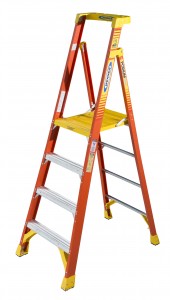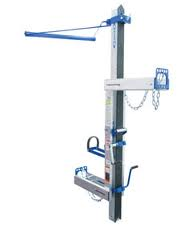Region 2 News Release: 13-1858-NEW/BOS-13-162
Sept. 24, 2013
Contact: Ted Fitzgerald Andre J. Bowser
Phone: 617-565-2075 617-565-2074
Email: fitzgerald.edmund@dol.gov bowser.andre.j@dol.gov
US Labor Department’s OSHA proposes more than $272,000 in fines, cites
four contractors for safety hazards at midtown Manhattan site
NEW YORK – The U.S. Department of Labor’s Occupational Safety and Health Administration has proposed $272,720 in fines against four New York contractors for safety hazards identified during the construction of a midtown Manhattan hotel. The March 21 inspection was conducted in response to a complaint about fall hazards at the 325 W. 33rd St. work site.
The largest penalties of $249,920 are proposed for Flintlock Construction Services LLC, the Mamaroneck-based general contractor for the construction of the 23-story hotel. Flintlock was cited for seven violations of OSHA’s fall protection and scaffolding standards that involved workers exposed to potentially fatal falls of up to 26 feet while they were on scaffolding.
“These employees were one trip, slip or misstep away from a deadly or disabling fall. Falls are the leading cause of death among workers in construction,” said Kay Gee, OSHA’s area director for Manhattan, Brooklyn and Queens. “There is no excuse for an employer’s failure to supply and ensure the use of legally required safeguards that can prevent injuries and save lives. The sizable fines proposed reflect both the severity of these hazards and that Flintlock was aware of, and failed to correct, the hazards.”
Specifically, Flintlock failed to provide and ensure the use of fall protection, such as guardrails or personal fall- arrest systems, for workers on the scaffold; the scaffold lacked a safe means of access, causing workers to climb its cross-bracing to reach their work platforms; the work platforms were not fully planked; and the scaffold was not tied off to restrain it from tipping. These conditions resulted in the issuance of four willful citations, with $233,200 in fines to Flintlock.
OSHA also issued three serious citations, with $16,720 in fines, to Flintlock for additional hazards. These include failing to provide training on the hazards associated with erecting scaffolds; failing to have a competent person determine the feasibility of providing fall protection for workers erecting and dismantling the scaffolding; a scaffold walkway that was too narrow; and inadequate anchorage for the fall protection system.
V&P Altitude Corp., a Brooklyn-based siding contractor, was issued five serious citations, with $13,200 in fines, for lack of fall protection; no safe access to the scaffolding; not fully planking the scaffold platforms; failing to tie off the scaffolding; and not locking mobile scaffold wheels and casters.
SMK Associates, an Astoria-based masonry contractor, was issued three serious citations, with $7,600 in fines, for electrical hazards and failing to provide eye and face protection. Maspeth Steel Fabricators Inc., a Maspeth-based steel framing contractor, was issued one serious citation, with a $2,000 fine, for failing to provide training on the hazards of working on scaffolds.
The citations can be viewed at http://www.osha.gov/ooc/citations/FlintlockCitations.pdf*,http://www.osha.gov/ooc/citations/SMKCitations.pdf*, http://www.osha.gov/ooc/citations/VPCitations.pdf* andhttp://www.osha.gov/ooc/citations/MaspethCitations.pdf*.
A willful violation is one committed with intentional, knowing, or voluntary disregard for the law’s requirements, or with plain indifference to worker safety and health. A serious violation occurs when there is substantial probability that death or serious physical harm could result from a hazard about which the employer knew or should have known.
Due to the nature and severity of violations committed by Flintlock Construction Services LLC, the general contractor has been placed in OSHA’s Severe Violator Enforcement Program, which mandates targeted follow-up inspections to ensure compliance with the law. OSHA’s SVEP focuses on recalcitrant employers that endanger workers by committing willful, repeat or failure-to-abate violations. Under the program, OSHA may inspect any of the employer’s facilities if it has reasonable grounds to believe there are similar violations.
Each employer has 15 business days from receipt of its citations and proposed penalties to comply, meet with OSHA’s area director, or contest the findings before the independent Occupational Safety and Health Review Commission.
OSHA has created a Stop Falls Web page at http://www.osha.gov/stopfalls, which has detailed information in English and Spanish on fall protection hazards and safeguards. The page offers fact sheets, posters and videos that vividly illustrate various fall hazards and appropriate preventive measures.
To ask questions, obtain compliance assistance, file a complaint or report workplace hospitalizations, fatalities or situations posing imminent danger to workers, the public should call OSHA’s toll-free hotline at 800-321-OSHA (6742) or the agency’s Manhattan Area Office at 212-620-3200.
Under the Occupational Safety and Health Act of 1970, employers are responsible for providing safe and healthful workplaces for their employees. OSHA’s role is to ensure these conditions for America’s working men and women by setting and enforcing standards, and providing training, education and assistance. For more information, visit http://www.osha.gov. |






 Fatal work injuries in the private construction sector increased 5 percent to 775 in 2012, while total hours worked in the industry increased just one percent.
Fatal work injuries in the private construction sector increased 5 percent to 775 in 2012, while total hours worked in the industry increased just one percent.
